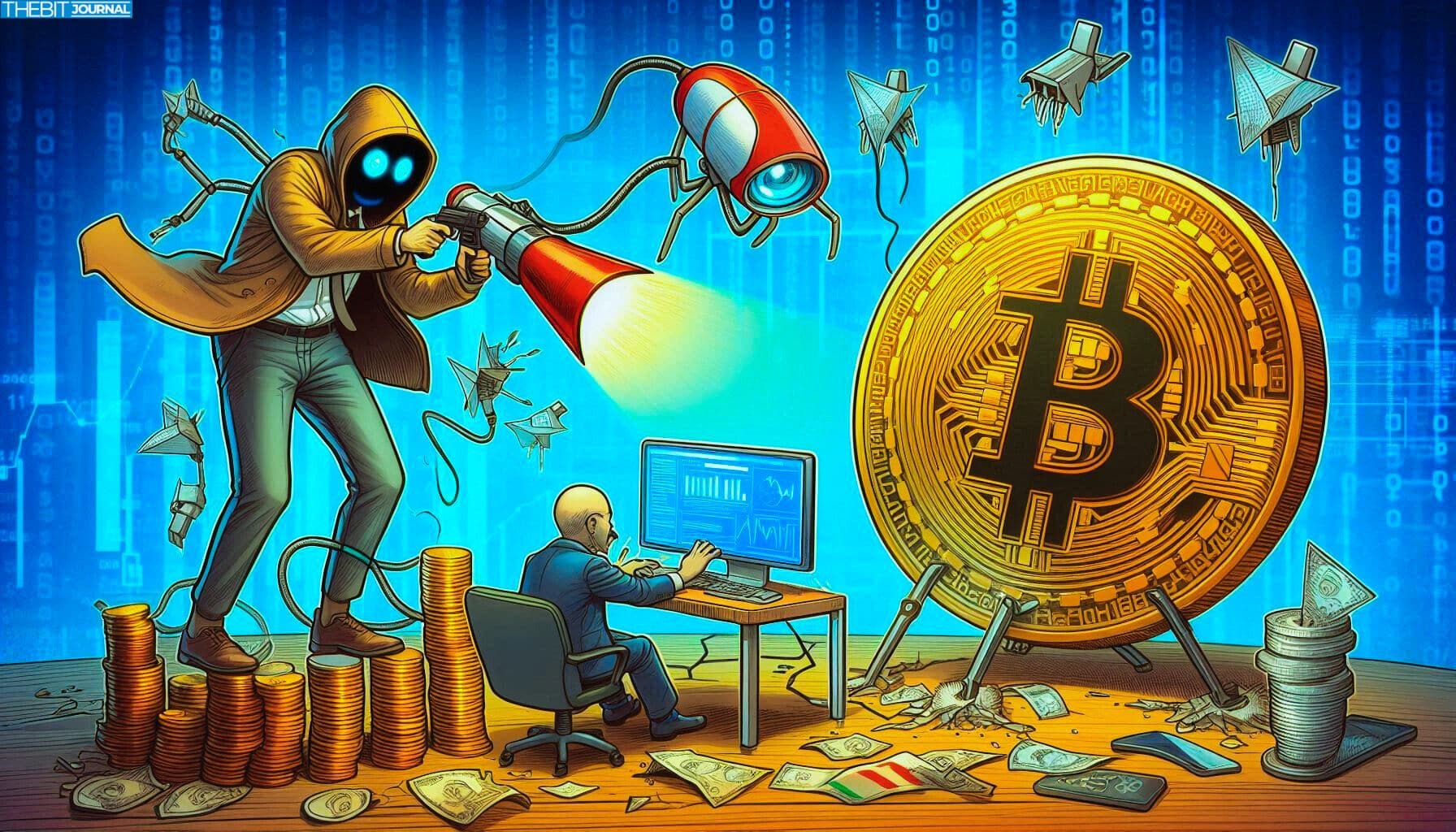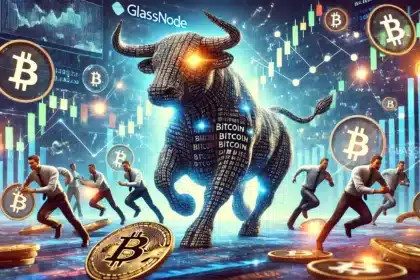In a time when Bitcoin is hitting record valuations, drawing in institutional giants, and capturing global headlines, it’s easy to assume the network is stronger than ever. But according to Jameson Lopp, a leading voice in Bitcoin security, the real danger isn’t what you might expect. It’s not regulators, hackers, or even technological failure; it’s the slow creep of apathy.
As Bitcoin becomes more mainstream, Lopp warns that its community risks becoming complacent. He argues that complacency could leave the network vulnerable to physical threats, systemic weaknesses, and unforeseen crises. With over a decade in the crypto trenches, including surviving a SWATting attack and helping thousands secure their assets, Jameson Lopp has earned his reputation as a relentless advocate for privacy, self-custody, and constant vigilance.
His message is urgent: unless the community continues to care, improve, and evolve, Bitcoin’s long-term survival may be in jeopardy; not from the outside, but from within.
From SWATting Trauma to Relentless Security Advocacy
In 2017, Jameson Lopp experienced a harrowing SWATting incident: a fraudulent emergency call sent police to his home with threats of violence. Rather than retreat, Lopp disappeared physically, adopting advanced privacy tactics while continuing to engage with the Bitcoin ecosystem online.

“The easier and safer thing would be to completely disappear,” he admits.
This incident shaped Lopp’s approach. He abandoned flashy appearances in favor of pseudonyms, decoy homes, and strict privacy measures. Even today, Jameson Lopp rarely appears in mainstream media to protect his family and focus on deeper security issues. His resilience proves that effective security requires both preparedness and courage.
Rising Threats: Wrench Attacks and Organized Crime
Jameson Lopp has documented over 200 physical attacks against Bitcoin holders, known as “wrench attacks,”- with over 30 occurring in the first half of 2025 alone. These attacks, ranging from kidnappings to assaults, often involve organized criminals targeting individuals for their private keys. Lopp observes an emerging pattern of international crime syndicates executing meticulously planned heists.
He stresses that flaunting wealth online makes individuals obvious targets.
“If you are on any sort of public network and you are flaunting your wealth, that’s one of the more risky things that you could be doing,” says Jameson Lopp.
Ossification: When Progress Becomes Liability
Another central concern for Jameson Lopp is Bitcoin’s ossification, the tendency for widely used systems to resist change. In his blog “On Ossification,” Lopp argues that resisting necessary evolution makes Bitcoin vulnerable. He highlights the need for upgrades, such as covenant capabilities and improved privacy features, to maintain Bitcoin’s resilience.
“Ossifiers are driven by pessimism,” he explains.
Jameson Lopp warns that complacency in development turns progress into stagnation. He believes a strong, decentralized Bitcoin must continue adapting and integrating security enhancements to counter emerging threats.
Quantum Computing: Ticking Clock for Protocol Updates
The specter of quantum computing also looms large for Jameson Lopp. He cautions that upgrading Bitcoin to resist future quantum threats is a slow process, requiring consensus, deployment, and mass migration.
As he puts it, “with quantum computing… we’ll have to come to a consensus on these half a dozen things simultaneously.”
Failure to move swiftly could expose vast amounts of BTC to quantum attacks. By promoting discussions and preparedness, Jameson Lopp believes the community can build safeguards before it’s too late.
KYC, Privacy, and Self-Custody: Don’t Trade Security for Convenience
Lopp also highlights the risks of compliance measures like KYC. He prefers non-KYC services and passport-based verification to avoid revealing sensitive personal information. Providing detailed KYC data, especially home addresses, increases vulnerability, he warns private services might leak or misuse that data.
Jameson Lopp also addresses wallet infrastructure. He advocates for multisig setups and decentralized key distribution to thwart stress-based crime. Casa’s educational guides, created by Lopp, teach holders how to secure their keys physically and digitally.

Apathy: The Silent Threat Undermining Bitcoin’s Future
Ultimately, Jameson Lopp identifies apathy as the silent killer of Bitcoin’s promise. He explains that when users stop caring about privacy, security, and decentralization, the system weakens.
“If people are apathetic about continuing to talk about improving Bitcoin, that’s when it becomes weak and more vulnerable to new threats,” he states.
His message: stay curious, stay critical. Ask hard questions. Call out vulnerabilities. Only through engagement and scrutiny can Bitcoin remain a robust alternative to centralized finance.
Conclusion: Vigilance Over Complacency
In a world where Bitcoin adoption accelerates and risks multiply, Jameson Lopp remains a vital voice urging the community to stay alert, informed, and secure. His unwavering commitment to privacy, self-custody, and decentralization serves as a call to action against complacency. Rather than fear external threats, Lopp warns that apathy, the quiet erosion of vigilance, is the most dangerous enemy.
Through his advocacy, tools, and personal example, he reminds the crypto world that Bitcoin’s resilience depends on individual responsibility and continuous dialogue. Staying engaged isn’t optional, it’s essential.
As Lopp says, “The most important thing that you can do for Bitcoin is to talk about it.”
Summary
Jameson Lopp, a renowned Bitcoin security expert and co-founder of Casa, believes that apathy poses a greater threat to Bitcoin than external forces like hackers or regulation. He highlights the rising number of physical wrench attacks and emphasizes the need for self-custody, privacy, and continuous discussion around Bitcoin’s vulnerabilities and future resilience.
FAQs
Who is Jameson Lopp, and why does he matter?
Jameson Lopp is one of Bitcoin’s foremost security experts. As CTO of Casa and creator of statoshi, he shapes best practices while educating users about real-world threats.
What is a wrench attack?
A wrench attack involves physically threatening a Bitcoin holder to force the surrender of private keys, essentially circumventing digital protections with brute force.
Why does Lopp fear ossification?
Ossification limits Bitcoin’s ability to upgrade and adapt, making it more vulnerable to emerging threats like new hacking techniques and quantum computing.
How urgent is the quantum computing threat?
Lopp warns that without proactive upgrades, Bitcoin’s ECDSA encryption could become vulnerable within five to ten years. Mitigation requires consensus and mass migration processes that take time.
Should I avoid KYC services completely?
Jameson Lopp recommends minimizing KYC exposure to protect personal data. Use passport-based checks and private mailboxes when possible and consider non-KYC platforms for added privacy.
Glossary
Jameson Lopp – Bitcoin OG, co-founder of Casa, creator of statoshi, and leading voice in Bitcoin security.
Wrench attack – A physical assault aimed at coercing crypto holders into revealing private keys.
SWATting – A dangerous prank where emergency services are falsely alarmed to target an individual.
Ossification – The stagnation of a system due to resistance against needed evolution.
Quantum Computing – Emerging tech capable of breaking current encryption, threatening Bitcoin’s key security.
KYC – “Know Your Customer,” a compliance process that can expose personal data.
Multisig – A security setup requiring multiple keys to authorize transactions, reducing coercion risk.





























